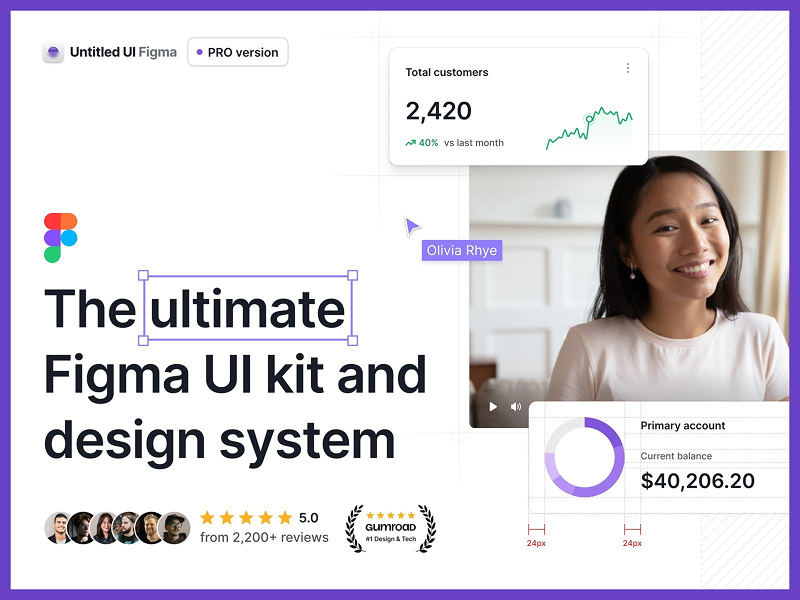AI wireframe generators have hit escape-velocity: niche tools that once spat out shaky grey boxes now turn a few words (or a napkin sketch) into clickable, high-fidelity flows in under a minute.
That speed is why analysts expect the AI-design market to balloon from $5.5 billion in 2024 to $40 billion by 2034, an 8× jump in a single decade.
If you’re shopping for a 2025-ready solution, this guide compares the leading platforms, shows you where each one excels, and walks you through a bullet-proof buying checklist so you can choose with confidence.
Why Trust AI with Your Early UX Work?
Designers no longer open a blank canvas, they open a chat box.
When Figma polled its community last month, 54% of designers said AI already improves the quality of their work, while 67% of developers agreed it boosts productivity.
Those gains arrive in three big ways:
- Shock-value speed. Tools such as Banani take a one-sentence prompt and return multiple screen variations in seconds.
- In-context editing. UX Pilot layers a chat interface over each frame so you can nudge copy, change color palettes or add flows without redrawing from scratch.
- Instant export. Modern generators push polished layouts straight into Figma, Webflow or React, turning wireframes into production assets instead of throw-away sketches.
Core Features to Compare
Prompt-to-Wireframe Workflows
Look for natural-language engines that handle both layout and component hierarchy. Uizard’s Autodesigner 2.0 gives you 500 generative credits in its Pro plan and outputs editable React code.
Screenshot, Sketch & Text Conversions
Visily’s Wireframe Scanner ingests a photo of a whiteboard drawing and rebuilds the layout as vectors, while Screenshot to Design lifts existing UI into editable boards.
Plugin & Export Ecosystem
UX Pilot, Banani and Relume all ship official Figma plugins so you can refine AI frames where you already work.
Figma itself is doubling-down: its First Draft generator re-launched after a short hiatus and now spans lo-fi to hi-fi suggestions inside the canvas.
2025 Comparison Table
| Tool | Starter Price (Monthly) | Free Tier | Notable Strength | Direct Export |
|---|---|---|---|---|
| UX Pilot | $12 Standard / $22 Pro | Yes | Credits for heat-maps & code export | Figma, HTML/CSS |
| Banani | TBA (free trial) | 7-day sandbox | Multi-screen prototypes auto-linked | In-app editor → share link |
| Relume | Free → Starter/Pro (contact sales) | Yes | Sitemap-to-wireframe in one click | Figma, Webflow, React |
| Uizard | $12/mo Pro (billed yearly) | Yes | Autodesigner 2.0 generates full projects | React, PNG/PDF |
| Visily | $11/editor/mo Pro (billed yearly) | Yes | 3 000 AI credits & Figma export | Figma, PNG |
| MockFlow | $14/mo WireframePro | Limited | 2 000 AI credits plus flow diagrams | UI code, PNG |
| Canva | Free (optional Pro) | Yes | AI image & mockup generation inside whiteboards | PNG, PDF |
Side-by-side Workflow Demo
So what does the AI hand-off look like in practice? Imagine you type “landing page for a vegan meal-kit startup” into each generator:
- Banani returns three wireframes, automatically links CTA buttons to a pricing page, and opens a quick-edit panel where you can swap hero text.
- UX Pilot delivers a four-step funnel plus scroll-heatmap prediction, then offers to export both code and Figma frames.
- Relume shows a generated sitemap on the left and a matching wireframe on the right, click Export to Webflow and you’re halfway to production.
You’ll notice each tool handles component naming and class structure differently. Run a quick style-lint before merging into an existing design system.
Buying Checklist for 2025
- Match credit caps to project volume. Visily’s 3,000-credit Pro tier covers roughly 250 prompt runs. Heavy agencies may outgrow that fast.
- Check export fidelity. Some platforms flatten icons or strip auto-layout constraints; do a test import to Figma before committing.
- Audit data governance. UX Pilot explicitly states your uploads are not used to train its models, a must-have for regulated industries.
- Plan for collaboration. Relume’s Team plan starts at three seats and unlocks unlimited projects, ideal for product squads.
- Stay ahead of vendor road-maps. Figma’s fresh AI suite (Sites, Make, Buzz, Draw) hints that native generation will soon be table-stakes across the design stack.
FAQs (People Also Ask)
Can you try UX Pilot’s generator before subscribing?
Yes. UX Pilot offers a free tier with credits to test wireframes, hi-fi UI and heatmaps—no card required.
How do you create a wireframe with AI?
Write a text prompt (or upload a sketch), let the model place core components, then tweak layout or copy inside the tool’s editor; finally export to Figma or code. Banani’s Text to Wireframes flow is a textbook example. For peace of mind, run the text through an AI-text checker to flag machine-written wording.
What types of wireframes can these tools generate?
Most platforms output low-to-mid fidelity frames, but UX Pilot and Uizard also jump straight to high-fidelity mock-ups with brand color suggestions.
Which AI tool is best for wireframing in 2025?
It depends: freelancers love Uizard’s pay-as-you-grow model, agencies prefer Relume’s team workspace, while growth marketers choose UX Pilot for built-in heat-maps. Use the checklist above to prioritise your must-haves.
AI Wireframe Generators Won’t Replace You
They’ll replace the blank page.
By pairing the speed of tools like UX Pilot or Relume with your own product intuition, you can prototype in hours, not weeks, and focus on the strategic UX calls only a human can make.
Start with a free tier, export a test flow into Figma, and see how fast your next idea takes shape.

